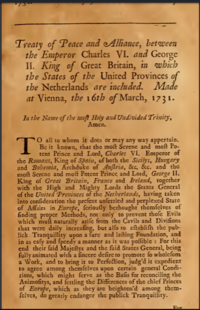
The War of the Polish Succession was a major European conflict sparked by a Polish civil war over the succession to Augustus II of Poland, which the other European powers widened in pursuit of their own national interests. France and Spain, the two Bourbon powers, attempted to test the power of the Austrian Habsburgs in Western Europe, as did the Kingdom of Prussia, whilst Saxony and Russia mobilized to support the eventual victor. The fighting in Poland resulted in the accession of Augustus III, who in addition to Russia and Saxony, was politically supported by the Habsburgs.
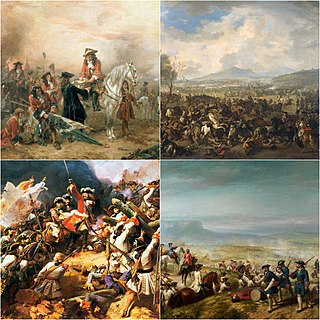
The War of the Spanish Succession was a European great power conflict that took place from 1701 to 1715. The death of childless Charles II of Spain in November 1700 led to a struggle for control of the Spanish Empire between his heirs, Philip of Anjou and Charles of Austria, and their respective supporters, among them Spain, Austria, France, the Dutch Republic, Savoy, and Great Britain. Related conflicts include the 1700–1721 Great Northern War, Rákóczi's War of Independence in Hungary, the Camisards revolt in southern France, Queen Anne's War in North America, and minor trade wars in India and South America.
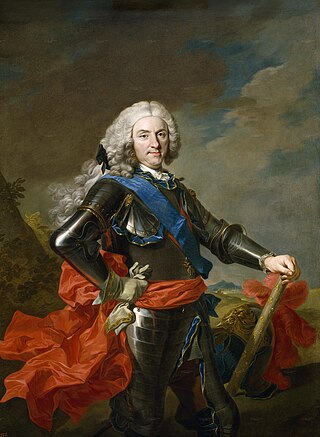
Philip V was King of Spain from 1 November 1700 to 14 January 1724 and again from 6 September 1724 to his death in 1746. His total reign is the longest in the history of the Spanish monarchy, surpassing Philip II. Philip V instigated many important reforms in Spain, most especially the centralization of power of the monarchy and the suppression of regional privileges, via the Nueva Planta decrees, and restructuring of the administration of the Spanish Empire on the Iberian peninsula and its overseas regions.

Charles VI was Holy Roman Emperor and ruler of the Austrian Habsburg monarchy from 1711 until his death, succeeding his elder brother, Joseph I. He unsuccessfully claimed the throne of Spain following the death of his relative, Charles II. In 1708, he married Elisabeth Christine of Brunswick-Wolfenbüttel, by whom he had his four children: Leopold Johann, Maria Theresa, Maria Anna, and Maria Amalia.
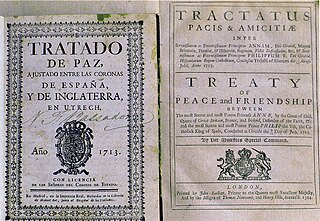
The Peace of Utrecht was a series of peace treaties signed by the belligerents in the War of the Spanish Succession, in the Dutch city of Utrecht between April 1713 and February 1715. The war involved three contenders for the vacant throne of Spain, and involved much of Europe for over a decade. The main action saw France as the defender of Spain against a multinational coalition. The war was very expensive and bloody and finally stalemated. Essentially, the treaties allowed Philip V to keep the Spanish throne in return for permanently renouncing his claim to the French throne, along with other necessary guarantees that would ensure that France and Spain should not merge, thus preserving the balance of power in Europe.
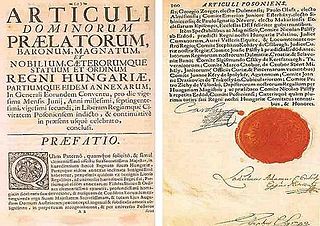
The Pragmatic Sanction was an edict issued by Holy Roman Emperor Charles VI, on 19 April 1713 to ensure that the Habsburg monarchy, which included the Archduchy of Austria, the Kingdom of Hungary, the Kingdom of Croatia, the Kingdom of Bohemia, the Duchy of Milan, the Kingdom of Naples, the Kingdom of Sardinia and the Austrian Netherlands, could be inherited by a daughter undivided.
The Triple Alliance was a defence pact signed on 4 January 1717 in The Hague between the Dutch Republic, France and Great Britain, against Bourbon Spain in an attempt to maintain the agreements of the 1713–15 Peace of Utrecht. The three states were concerned about Spain becoming a superpower in Europe. As a result, militarisation took place and caused great havoc to civilians. That enraged Spain and other states and led to brinkmanship. The alliance became the Quadruple Alliance the next year, after the accession of Holy Roman Emperor Charles VI.

The War of the Quadruple Alliance was fought from 1718 to 1720 by Spain, and the Quadruple Alliance, a coalition between Britain, France, Austria, and the Dutch Republic. Caused by Spanish attempts to recover territories in Italy ceded in the 1713 Peace of Utrecht, most of the fighting took place in Sicily and Spain, with minor engagements in North America and Northern Europe. Spain also supported the Jacobite rising of 1719 in Scotland in an effort to divert British naval resources.
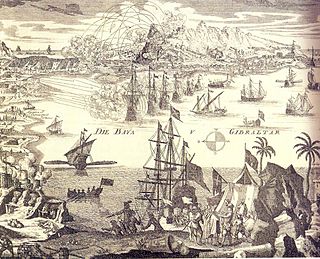
The Treaty of Seville was signed on 9 November 1729 between Britain, France, and Spain, formally ending the 1727–1729 Anglo-Spanish War; the Dutch Republic joined the Treaty on 29 November.
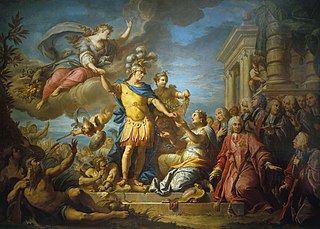
The 1748 Treaty of Aix-la-Chapelle, sometimes called the Treaty of Aachen, ended the War of the Austrian Succession, following a congress assembled on 24 April 1748 at the Free Imperial City of Aachen.
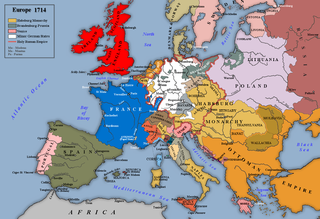
The Treaty of Rastatt was a peace treaty between France and Austria that was concluded on 7 March 1714 in the Baden city of Rastatt to end the War of the Spanish Succession between both countries. The treaty followed the Treaty of Utrecht of 11 April 1713, which had ended hostilities between France and Spain, on the one hand, and Great Britain and the Dutch Republic, on the other. A third treaty at Baden, Switzerland, was required to end the hostilities between France and the Holy Roman Empire.

The Pacte de Famille is one of three separate, but similar alliances between the Bourbon kings of France and Spain. As part of the settlement of the War of the Spanish Succession that brought the House of Bourbon of France to the throne of Spain, Spain and France made a series of agreements that did not unite the two thrones, but did lead to cooperation on a defined basis.
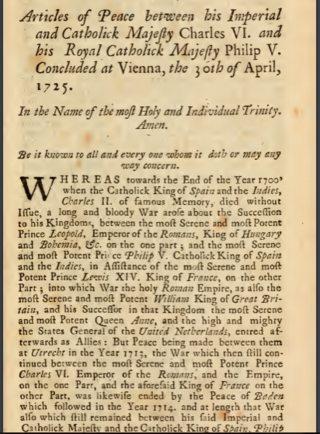
The Peace of Vienna was a series of four treaties signed between 30 April 1725 and 5 November 1725 by the Habsburg monarchy, the Holy Roman Empire, and Bourbon Spain; the Russian Empire later joined the newly-found alliance in 1726. The signing of this treaty marks the founding of the Austro-Spanish Alliance and led the Fourth Anglo-Spanish War (1727-1729). This new alliance thereby removed Austria from the Quadruple Alliance. In addition to a formation of the new partnership, the Habsburgs relinquished all formal claims to the Spanish throne, while the Spanish removed their claims in the Southern Netherlands, and a number of other territories.

The 1720 Treaty of The Hague was signed on 17 February 1720 between Spain and the Quadruple Alliance, established by the 1718 Treaty of London. Its members included Britain, France, the Dutch Republic and Austria.

Antonio Farnese was the eighth and final Farnese Duke of Parma and Piacenza. He married, in 1727, Enrichetta d'Este of Modena with the intention of begetting an heir. The marriage, however, was childless, leading to the succession of Charles of Spain, whose mother, Elisabeth Farnese, was Antonio's niece, to the ducal throne.
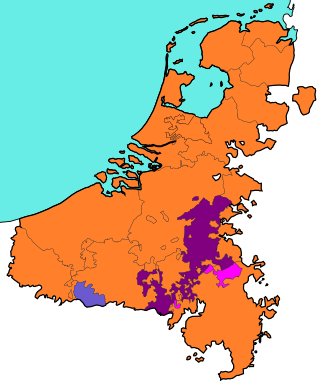
Habsburg Netherlands was the Renaissance period fiefs in the Low Countries held by the Holy Roman Empire's House of Habsburg. The rule began in 1482, when the last Valois-Burgundy ruler of the Netherlands, Mary, wife of Maximilian I of Austria, died. Their grandson, Emperor Charles V, was born in the Habsburg Netherlands and made Brussels one of his capitals.
The Anglo-French Alliance is the name for the alliance between Great Britain and France between 1716 and 1731. It formed part of the stately quadrille in which the Great Powers of Europe repeatedly switched partners to try to build a superior alliance.

The Capture of Minorca saw the island of Menorca captured from Spain by British-Dutch forces acting on behalf of Charles VI, Holy Roman Emperor the Austrian claimant to the Spanish throne in September 1708 during the War of the Spanish Succession. The British would later annex the island as their own possession at the Treaty of Utrecht (1713).

The imperial election of 1742 was an imperial election held to select the emperor of the Holy Roman Empire. It took place in Frankfurt on January 24. The result was the election of Charles Albert of Bavaria, the first non-Habsburg emperor in hundreds of years.

The Kingdom of Spain entered a new era with the death of Charles II, the last Spanish Habsburg monarch, who died childless in 1700. The War of the Spanish Succession was fought between proponents of a Bourbon prince, Philip of Anjou, and the Austrian Hapsburg claimant, Archduke Charles. After the wars were ended with the Peace of Utrecht, Philip V's rule began in 1715, although he had to renounce his place in the succession of the French throne.
